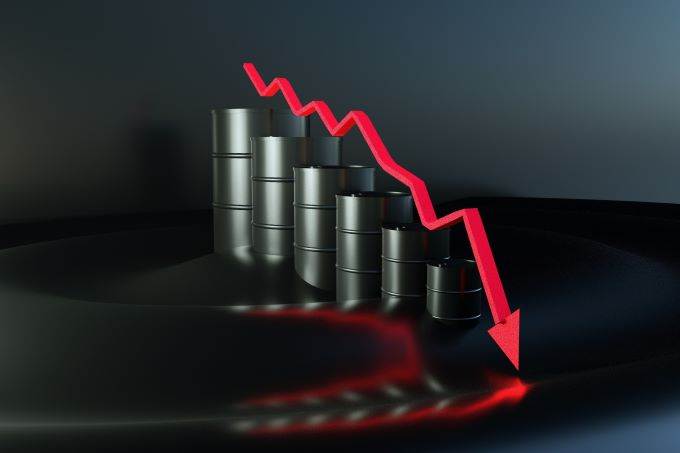 Oil futures were modestly lower on Wednesday afternoon in Asia, after seeing five consecutive days of gains for the first time since July 2019. Oil prices spiked on Tuesday, boosted by optimism about the newly-enacted production cuts and reopening of many countries' economies which could increase demand. U.S. WTI futures surged 20.45 percent on Tuesday to $24.56 per barrel, but were slightly lower on Wednesday, trading down 0.24 percent to $24.50 per barrel as of 2:51 p.m. HK/SIN. Brent crude futures ended up nearly 14 percent on Tuesday at $30.97 per barrel, and continued its climb on Wednesday, gaining 0.23 percent to trade at $31.05 per barrel.
Oil futures were modestly lower on Wednesday afternoon in Asia, after seeing five consecutive days of gains for the first time since July 2019. Oil prices spiked on Tuesday, boosted by optimism about the newly-enacted production cuts and reopening of many countries' economies which could increase demand. U.S. WTI futures surged 20.45 percent on Tuesday to $24.56 per barrel, but were slightly lower on Wednesday, trading down 0.24 percent to $24.50 per barrel as of 2:51 p.m. HK/SIN. Brent crude futures ended up nearly 14 percent on Tuesday at $30.97 per barrel, and continued its climb on Wednesday, gaining 0.23 percent to trade at $31.05 per barrel.
According to CNBC analysts, "the demand bottom is behind us, and this is manifesting with oil prices which are on the rise." However, many analysts are concerned that the worst is not yet behind us, with air travel not expected to rebound to past levels for at least another 24 months and reduced demand potentially rendering the current cuts of 9.7 million barrels per day useless, as demand may be reduced by more than that.
Despite a recent increase in prices, the road to a full price recovery will certainly be a long one. Forbes analyst Sarah Hansen suggests that the next few weeks are likely to see more weakness. "The existing problems did not magically get resolved, the storage constraint is still there, but a couple of weeks away, so we will see its effect on prices soon, as the market will get tight," she quoted Per Magnus Nysveen, head of analysis at Rystad Energy as saying.
Currency Movements
The yen traded near a seven-week peak against the dollar on Wednesday afternoon and touched near a three-year high against the euro after Germany's highest court gave the ECB three months to justify purchases in its bond-buying program or risk losing Bundesbank as a participant in an economic recovery scheme. The decision sent the euro to a one-week low overnight and to a three-year low during Wednesday's morning session, with the yen hitting 115.09 against the euro, with traders worrying about the future of the common currency.
The dollar slid against the yen, falling 0.291 percent to 106.27. The dollar also edged down modestly against the pound, with the sterling gaining 0.08 percent to trade at $1.244. Despite these declines, the dollar index was higher, up 0.09 percent to 99.79 .DXY. The dollar's gains are its fourth consecutive sessions of gains and was boosted by the possibility of reopening businesses in strategic areas in the U.S.
